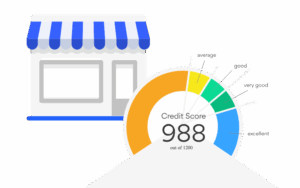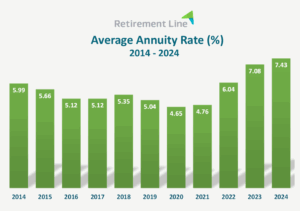According to the World Bank, the number of adults without access to financial services has dropped from 2.5 billion in 2011 to 1.4 billion in 2021. While this is a great success, there is still a lot that can be done to further make official financial services more accessible, especially in developing economies. Therefore, this July, we explore how the fintech industry can further increase financial inclusion in developing markets, identify regional trends and remove barriers to digital services.
One of the biggest talking points surrounding financial inclusion in digital banking is the hurdles that are preventing it. It is very common to hear “financial inclusion can bring about x amount of benefits for consumers and companies” and “more needs to be done to create greater financial inclusion” in the same breath. As a result, we are kicking off this month’s deep dive into financial inclusion by looking at some of the barriers preventing it in the digital banking space and how they can be overcome.
Breaking the unbanked loop


Reflecting on his years of experience, Sergiy Fitsak, managing director at Softjourn, the full-cycle development company, explains that while accessibility and trust are big problems, many financial institutions are coming up against similar challenges traditional banking players face in registering unbanked users.
“From two decades of building fintech solutions, I see three major barriers consistently. First is the infrastructure gap – reliable internet and smartphone penetration remain spotty in many developing regions, making consistent digital banking nearly impossible.
“Second is the trust deficit. When you’ve never had formal banking, handing over money to an app feels incredibly risky. We’ve worked with clients where users would literally test systems with tiny amounts for months before trusting larger transactions.
“Third is the documentation catch-22. Digital banking often requires the same rigid KYC documentation as traditional banking, but the unbanked frequently lack formal identification or proof of address. They’re stuck in a loop where they need banking to establish a financial identity, but need a financial identity to access banking.”
Earning trust


Echoing similar views, Arthur Azizov, founder and investor at B2 Ventures, the European venture capital firm, also puts an emphasis on firms to be patient with users who may not have confidence in financial institutions for a variety of reasons.
Exploring the hurdles, he said: “Four frictions stand out, in my opinion. First, access and cost: just ~51 per cent of adults in sub-Saharan Africa own a smartphone, and 1GB of data can cost eight per cent of monthly income (four times the UN’s affordability target). Even in Latin America, where smartphone adoption is 80 per cent, rural ‘dead zones’ remain common.
“Second, identity: roughly 29 per cent of sub-Saharan African adults and 17 per cent in South Asia still lack a state-recognised ID, instantly failing KYC. Third, trust and literacy: after decades of fraud, hyperinflation, or opaque banking terms, scepticism runs deep. So, apps should earn trust before deposits follow. Finally, regulatory inertia: many banking laws still require wet-ink signatures or in-branch onboarding, which slows fintech rollout and reinforces legacy barriers.
“Until mobile internet is cheap, IDs are universal, and policy goes digital-first, the world’s 1.4 billion unbanked won’t be reached at scale.”
Assuming a high level of digital confidence


For Hilary Stephenson, managing director at Nexer Digital, the digital products and services designer, many platforms, incorrectly, are assuming users have an understanding of digital products, meaning they are left out by design.
“Despite the rapid growth of digital financial services, key barriers still remain, often rooted in trust, design, and digital literacy. One significant hurdle is the lack of user-centred design, especially for vulnerable customers. Many platforms still assume a level of digital confidence, cognitive processing speed, or language proficiency that simply isn’t universal.
“There’s also the issue of exclusion by design, whereby services are often optimised for the majority without consideration for people with access needs such as neurodivergent users, disabled people, or those with low literacy. If we continue to conflate ‘digital access’ with ‘digital inclusion,’ we risk deepening the very inequalities we aim to solve.
“At Nexer Digital, we see time and again how participatory design and working directly with those most at risk of exclusion can uncover small, practical fixes that make a large impact. From confusing navigation to poorly labelled buttons, the barriers may appear minor, but the consequences are not.”
Outdated laws


Some countries have been able to keep their laws and regulations up to date with digital technology development, but for those that haven’t, their citizens are the ones paying the price, as the system in place to protect them is hindering them from gaining access to services which could help create a digital financial profile and gain access to banking.
Elaborating on this, Andrei Korchak, chief technology officer at OCTA, a modern platform designed to optimise the collection process through automation, enabling businesses to manage contracts, streamline invoice payments, access financing, and simplify debt recovery, said: “One of the major barriers to digital banking is outdated regulation.
“In many countries, financial laws were written before digital tools like e-signatures, online identity checks, and digital KYC existed. As a result, getting approval for these processes can be slow and complex. Even when digital solutions are available, legal acceptance and implementation often take years. In some countries, these issues remain unresolved.
“Another significant challenge is limited internet access. In many developing regions, people still lack affordable smartphones or reliable internet connections. For example, SMS banking is still widely used in parts of Africa because it works on basic phones. Without modern devices and stable connectivity, full participation in digital banking is difficult if not to say almost impossible.
Tackling fraud will reduce questions around digital banking


Serious fraud cases can put consumers off trying digital financial services. Joanne (Jo) Wensley, vice president of engineering at Smarsh, the communications data and intelligence firm, explains that in order to reduce fears surrounding digital banking, services must be simple and accessible for all, creating a pathway for trust.
“Digital exclusion remains one of the most significant barriers in accessing modern digital banking services. We see people across geographies and demographics lack the technical skills and/or necessary resources to engage with digital banking, and this is creating a widening gap that must be addressed.
“Importantly, even when people do have the means to access digital banking, fraudulent practices and concerns about data, privacy and security often cause hesitation. Equally, complex technology can also compound these fears, further alienating users, particularly if solutions aren’t design for simplicity and accessibility.”
Challenges for both consumers and companies


Looking at both service provider and consumer, Richard Albery, head of commercial, European banks and intermediaries at ACI Worldwide, the digital payments software company, explores what the biggest challenges are.
“One of the biggest barriers to digital banking is unequal access to suitable infrastructure and technology, and we as an industry have a responsibility to balance innovation with banking inclusivity. Many consumers, communities and small businesses around the world—and on our immediate doorstep—struggle with poor internet connectivity, lack of access to digital devices and low levels of digital literacy.
“Security, privacy concerns and a general fear of losing money in the virtual world also deter adoption, especially amongst vulnerable populations and demographics.
“On the institutional side, financial organisations face hurdles such as outdated legacy systems, which delay the availability to release new products, difficulty integrating new technologies and navigating complex regulatory environments. In combination, these issues create a fragmented digital banking landscape and slow down widespread adoption.
“Many financial institutions run free educational services to support their customers’ everyday digital banking experience; however, financial crime and the resulting media reporting continue to act as a deterrent to adoption.”




